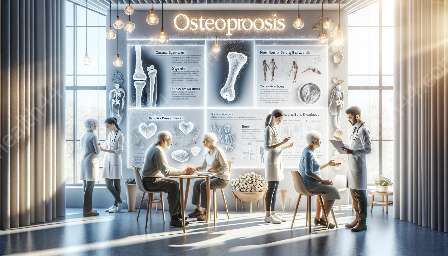Osteoporosis is a common bone disease that affects many individuals, particularly as they age. This condition is characterized by weakened bones, making them more susceptible to fractures and breaks. As we explore the relationship between osteoporosis and aging, it's important to understand the impact this condition has on overall health and well-being, as well as its connection to other health conditions.
Understanding Osteoporosis
Osteoporosis is a condition that causes bones to become weak and brittle, increasing the risk of fractures and breaks. Our bones are constantly being renewed, with old bone tissue being broken down and replaced by new tissue. However, with osteoporosis, this balance is disrupted, leading to a decrease in bone density and strength.
Impact of Aging on Osteoporosis
Age is one of the primary risk factors for osteoporosis. As individuals get older, the body's ability to build new bone tissue decreases, while the rate of bone breakdown increases. This imbalance results in a gradual loss of bone density, making older adults more susceptible to osteoporosis. Additionally, hormonal changes that occur with aging, such as decreased estrogen levels in women after menopause, can further contribute to the development of osteoporosis.
Furthermore, aging often leads to a more sedentary lifestyle, which can exacerbate bone loss and weaken muscles, increasing the risk of falls and fractures.
Health Conditions Linked to Osteoporosis
Osteoporosis is not an isolated condition and can be associated with other health conditions. For example, individuals with osteoporosis may also be at higher risk for heart disease and stroke. The impact of osteoporosis on mobility and independence can also lead to mental health issues such as depression and anxiety.
Prevention and Management
While aging is a significant risk factor for osteoporosis, there are steps that can be taken to prevent and manage this condition. Adequate calcium and vitamin D intake, regular weight-bearing and muscle-strengthening exercises, and lifestyle modifications such as quitting smoking and limiting alcohol consumption can help maintain bone health.
Additionally, early detection through bone density testing and seeking appropriate medical treatment, including medication and hormone therapy when necessary, can help manage osteoporosis and reduce the risk of fractures.
Conclusion
Osteoporosis, particularly in the context of aging, is a complex health issue that requires attention and understanding. By recognizing the interplay between osteoporosis, aging, and other health conditions, individuals can take proactive steps to optimize bone health and overall well-being as they age.


